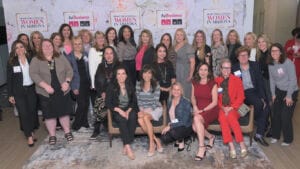Is it a dilemma or a challenge?
More women are starting and succeeding as U.S. small-business owners and entrepreneurs – many in industries once considered unthinkable for them – than men, yet average annual revenues of women-owned businesses are lower than those of their male counterparts.
The 2015 State of Women-Owned Business Report (AMEX Open, 2015) estimated that women started 1,200 new businesses every day during the past year, up from an average of 740 a day the year prior. Four out of 10 new firms are now started by women.
In Arizona, from 2007 to 2012, the number of women-owned businesses increased by 44,370, or 32.1 percent, to 182,425, according to the National Women’s Business Council.
Nationally, there are 23 states (and the District of Columbia) where post-recession woman-owned firm growth has not caught up to pre-recession numbers. This includes six states where post-recession growth of women-owned firms is still less than half of what it was in the 2002-2007 pre-recession period. Arizona is among those six.
Interestingly, “The real issue at hand is not getting more women to start business, but rather providing support to women who are already in business to enable them to grow their enterprises to the next level. The AMEX Open report recommends that policy and programmatic support target firms with five to nine employees, and those aiming at, but just shy of, the million-dollar mark.”
The McKinsey Institute projects that if women business owners achieved the same level of success as their male counterparts, $3.2 trillion in revenues would be generated and 16 million people would get employed..
So, how do we help these women-owned firms grow their enterprises?
Several major metropolitan areas, including the Valley, have taken steps to make that happen.
In Boston, a new city initiative called Women Entrepreneurs Boston (WE BOS) provides skills, technical assistance and networking that women need to launch and grow their business. The Athena Center for Leadership Studies at Barnard College in New York City combines the college’s resources “with those of the venture community at Columbia University” to “provide education and training needed by today’s underrepresented and highly undercapitalized women entrepreneurs,” according to the Barnard website.
In 2015, Arizona Women’s Education and Employment (AWEE), in cooperation with the U.S. Small Business Administration, launched Maricopa County’s only women’s business center to develop, support and expand women-owned businesses for entrepreneurs and for women facing economic or other barriers to starting a business.
Since opening, AWEEc has trained and counseled 3,021 clients. Our clients – we prefer to call them entrepreneurs – have started 75 small businesses that generated $958,268 in revenue in just under two years. And, we provided guidance and assistance in securing $1.3 million in capital formation funding.
We are proud of those numbers, but when you consider the big-picture potential of the growth possibilities, they represent only a very small percentage of what we hope – and expect – to see in the years ahead.
So, challenge or dilemma? You be the judge.




